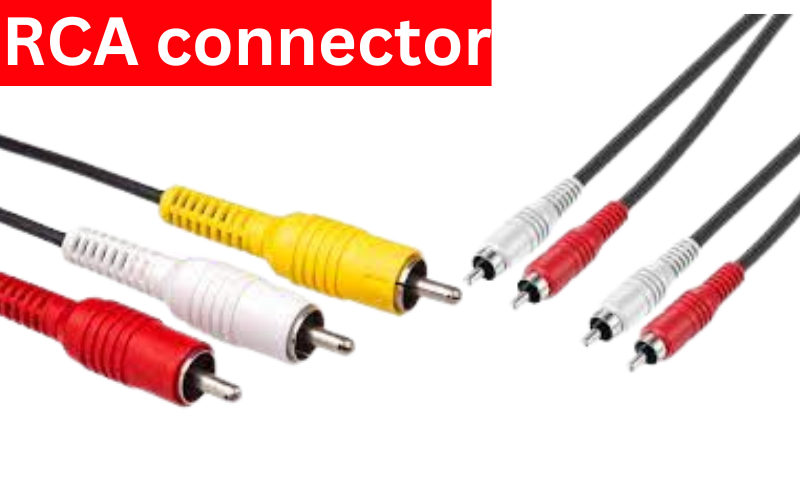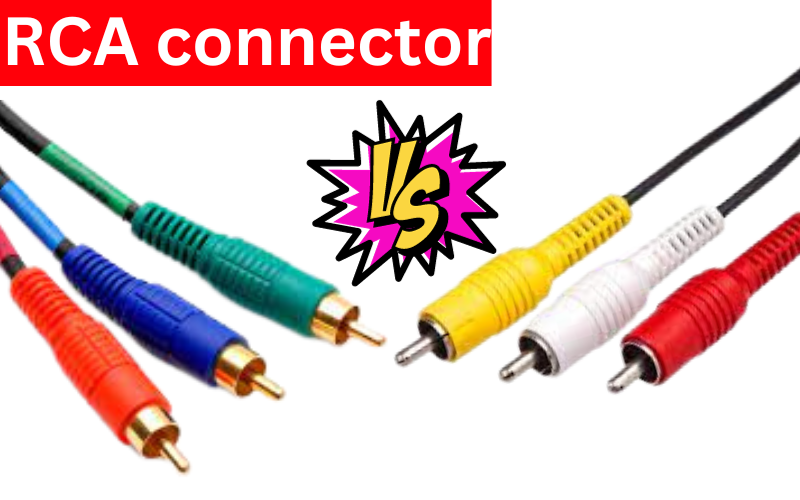Last Updated on 8 months by On Trends Gear
You may be familiar with RCA cables if you have shopped for audio or video cables.
These cables are available in red, green, and blue in addition to red, yellow, and white.
Although the functions of both sets of RCA cables are identical, their methods of signal transmission and the devices they connect to are different.
The comprehensive differences and similarities between Red Green Blue vs Red White Yellow RCA cables will be discussed in this article.
Table of Contents
What Are RCA Cables?

RCA cable was probably used the last time you hooked up a CD or DVD player to your television.
A straightforward RCA cable consists of three colour-coded connectors that extend from one end and attach to three matching coloured jacks on the rear of an output device, such as a TV or projector.
From the component device to the output device (a television or speakers), it transports audio and visual signals.
The Radio Corporation of America is the company that gave the cable its name; they used it to link phonographs and amplifiers back in the 1940s.
It was first widely used at homes in the 1950s and is still used today. Component and composite video are the two most used kinds.
Red Green Blue RCA Cables Stand For?
Each of the three cables—green, blue, and red, commonly known as component video—transmits a different part of the video signal.
Information about the signal’s brightness is transmitted via the green wire.
The red and blue wires send the red and blue components of the image’s colour. All three signals work together to deduce green components.
Component video, sent over three independent cables, does not require as much compression as composite video, transmitted over a single red, white, and yellow wire.
This enables progressive scan pictures, which provide images with smoother edges and support high-definition resolutions up to 1080.
Red, White Yellow RCA Cables Stand For?
The most popular kind of RCA cables are the red, yellow, and white wires, also referred to as composite RCA cables.
Most often, they link various types of media players, recorders, and game consoles to televisions and other display devices.
The white RCA plug carries the left audio channel, the yellow RCA plug maintains the video signal, and the red RCA plug carries the right audio channel.
A two-channel stereo audio signal and a standard definition (SD) video signal are transmitted when these three wires are linked.
Progressive scan photos and HD multimedia are not supported.
The video signal is severely compressed and loses much of its resolution and visual quality because it must pass through a single wire.
The visual quality is further deteriorated by radio frequency interference in the cables.
Both RCA Cable Similarities

Audiovisual connection cables in red, green, and blue, as well as red, white, and yellow, both send and receive analogue video signals.
However, that is the only point at which the two forms are comparable.
Most modern electronics do not work with the older composite cable types.
Modern high-definition gadgets are compatible with the newer component cable standard.
Red Green Blue vs Red White Yellow RCA Cables Difference
| Features | Red Green Blue RCA Cables | Red, Yellow White RCA Cables |
| Also Known As | Component RCA Cables | Composite RCA Cables |
| Color Coding | Red (Red Color Channel), Green (Green Color Channel), Blue (Blue Color Channel) | Red (Right Audio), White (Left Audio), Yellow (Video) |
| Signal Type | Analog | Analog |
| Usage | Transmit high-definition video signals from devices to HD TVs and displays | Connect audio and video equipment to TVs and other display devices |
| Video Quality | High-definition (HD), supports resolutions up to 1080p | Standard-definition (SD) |
| Audio Channels | Two-channel stereo or 5.1 surround sound | Two-channel stereo audio |
Possible Solution to Hook RCA Cable On an Old TV with Composite Converters
The process of connecting cables of the red, blue, and green colours to the ports of the red, yellow, and white colours is simple.
Initially, you must identify the input jacks on the back of your device. Generally speaking, these ports will be designated red, yellow, and white.
Once you have determined which ports are which, you will need to attach the ends of the three red, blue, and green wires to the ports that correspond to them.
Regarding colour pairings, red is with red, blue is with yellow, and green is with white.
You will be ready to proceed once all of the connections have been formed securely.
It can be challenging to connect cables of the red, blue, and green varieties to those of the red, yellow, and white kinds.
On the other hand, if you make use of a converter that can switch from composite to component, you will have no trouble enabling your device to interact with any cable.
In order to convert the signal to the appropriate kind on its output, you must first properly set up the converter and then connect all three coloured wires.
It is essential to have a converter since it is a piece of electrical equipment that is capable of transitioning from one type of signal (composite) to another type of signal (component).
Your gadget will be able to communicate with any cable if you use this method.
The output of video can also be done in a variety of resolutions thanks to converters.
If, for instance, you want to use a component connection that is rated for high definition (1080p) but your device only supports standard definition (480p), then the converter will convert all of the signals from 480p to 1080p.
Conclusion
This review of component cable and composite cable should help you find the information you need.
It is important to know the difference between the two types of RCA cords so that you can pick the right connector for your needs.
As you read above, the composite-to-component adapter lets you connect older devices that work with RCA cables to newer TVs and monitors.
Even though there may be other options, this converter is without a doubt the cheapest and most useful one.